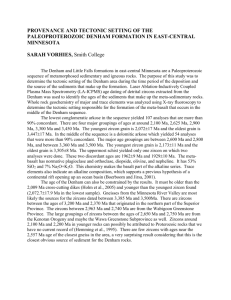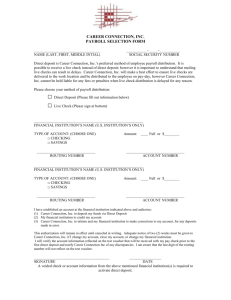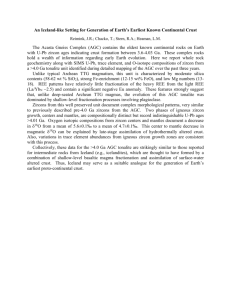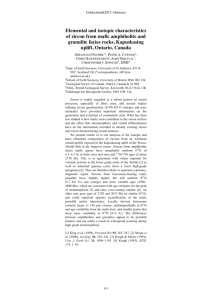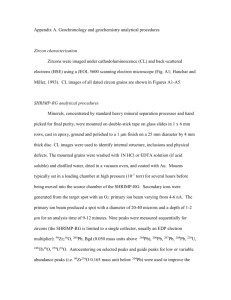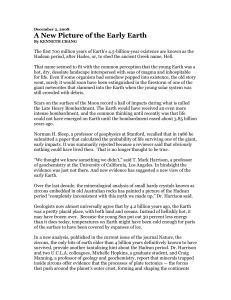Material properties and microstructure from
advertisement
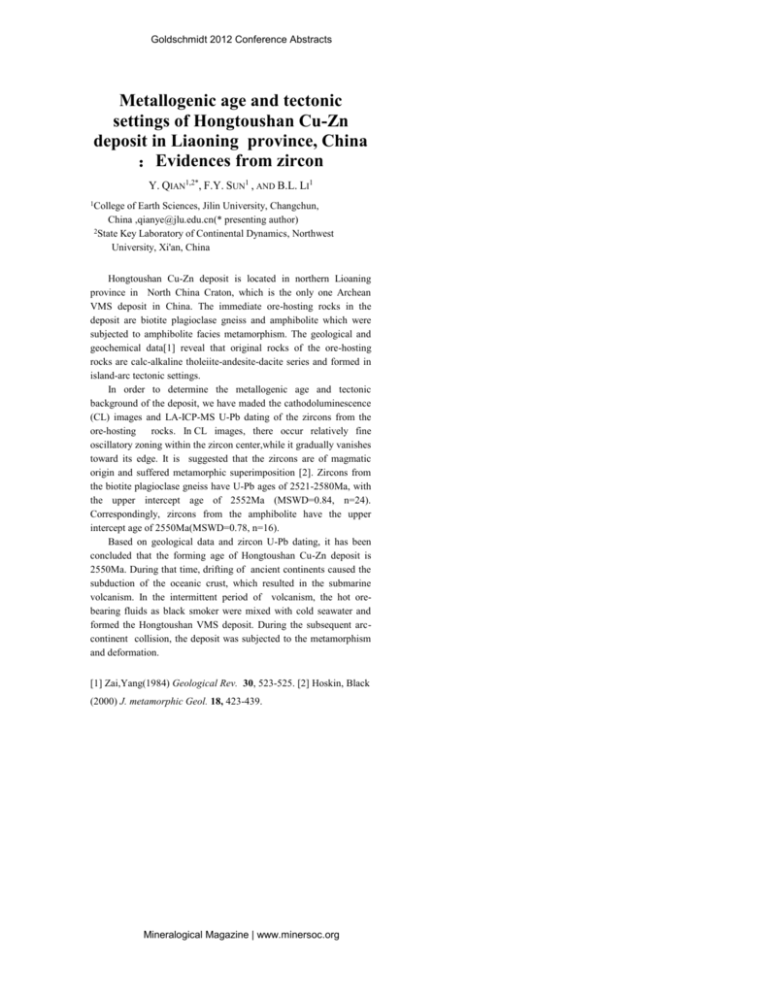
Goldschmidt 2012 Conference Abstracts Metallogenic age and tectonic settings of Hongtoushan Cu-Zn deposit in Liaoning province, China :Evidences from zircon Y. QIAN1,2*, F.Y. SUN1 , AND B.L. LI1 1College of Earth Sciences, Jilin University, Changchun, China ,qianye@jlu.edu.cn(* presenting author) 2State Key Laboratory of Continental Dynamics, Northwest University, Xi'an, China Hongtoushan Cu-Zn deposit is located in northern Lioaning province in North China Craton, which is the only one Archean VMS deposit in China. The immediate ore-hosting rocks in the deposit are biotite plagioclase gneiss and amphibolite which were subjected to amphibolite facies metamorphism. The geological and geochemical data[1] reveal that original rocks of the ore-hosting rocks are calc-alkaline tholeiite-andesite-dacite series and formed in island-arc tectonic settings. In order to determine the metallogenic age and tectonic background of the deposit, we have maded the cathodoluminescence (CL) images and LA-ICP-MS U-Pb dating of the zircons from the ore-hosting rocks. In CL images, there occur relatively fine oscillatory zoning within the zircon center,while it gradually vanishes toward its edge. It is suggested that the zircons are of magmatic origin and suffered metamorphic superimposition [2]. Zircons from the biotite plagioclase gneiss have U-Pb ages of 2521-2580Ma, with the upper intercept age of 2552Ma (MSWD=0.84, n=24). Correspondingly, zircons from the amphibolite have the upper intercept age of 2550Ma(MSWD=0.78, n=16). Based on geological data and zircon U-Pb dating, it has been concluded that the forming age of Hongtoushan Cu-Zn deposit is 2550Ma. During that time, drifting of ancient continents caused the subduction of the oceanic crust, which resulted in the submarine volcanism. In the intermittent period of volcanism, the hot orebearing fluids as black smoker were mixed with cold seawater and formed the Hongtoushan VMS deposit. During the subsequent arccontinent collision, the deposit was subjected to the metamorphism and deformation. [1] Zai,Yang(1984) Geological Rev. 30, 523-525. [2] Hoskin, Black (2000) J. metamorphic Geol. 18, 423-439. Mineralogical Magazine | www.minersoc.org

